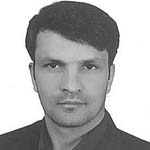The Study of Ancient Population Dynamics using Paleodemographic Approach
Paleodemography seeks to discern the demographic parameters of ancient populations through archaeological evidence. The foundational assumption in paleodemographic reconstructions is that the age and sex distribution of unearthed mortality samples accurately represent the death rates of the populations they belonged to. Under the principle of uniformitarianism, it is assumed the biological processes related to mortality and fertility in human populations have remained constant over time. Apart from the importance of overall numbers and rates of population growth, analyzing population structure offers deep insights into historical demographic processes and societal behaviors. The structure of a population in turn is shaped by the aggregate impact of health and disease experiences over time within a population. In certain cases, demographic data may provide evidence of a specific cause of death. Catastrophic events, whether natural mass disasters or high-mortality disease epidemics yield mortality distributions that reflect the age structure of the population at risk. Moreover, human migration significantly affects disease distribution globally, impacting indigenous populations, while other societal factors like war can also change the population structures. This paper reviews the determinants that shape and change the demographic structures of ancient populations by using the paleo-demographic approach.
-
Analysis of the Crises of Cultural Heritage in the Afghanistan (Challenges and Actions)
Farhad Shamal, *, Bijan Rouhani
Athar Journal, -
An Investigation on Identity Challenges Faced by Muslim Women Immigrants in Europe
Reyhanesadat Gerami, Younes Nourbakhsh *,
Women in Development and Politics, Spring 2025 -
Ethnic Differences in Childbearing Ideals and Behaviors in Iran
*, Zahra Abedini, Mahdi Malmir, Marzieh Ebrahimi
Journal of Population Association of Iran, -
Examining the animal and human remains from the Eastern Graveyard at Gareh Tepe of Sagzabad (Iron Age II, III) using a Taphonomic perspective
Alireza Yazdani Sangari*,
Journal of Research on Archaeometry,




